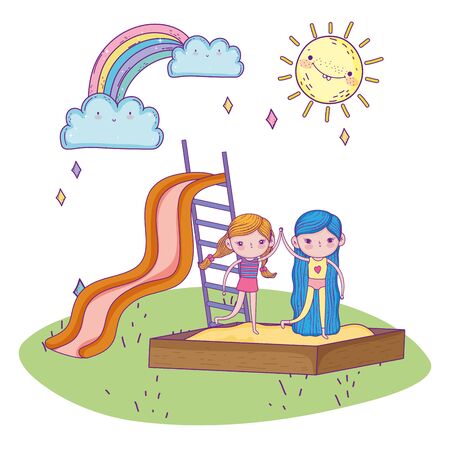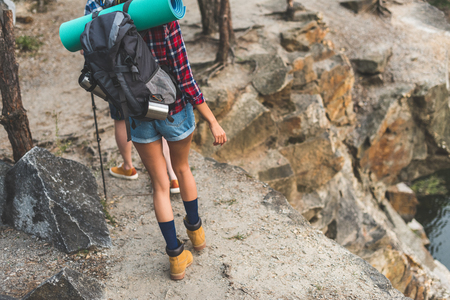Planning Your National Park Adventure
Embarking on a family trip to a U.S. National Park can be one of the most rewarding ways to bond, learn, and explore together. With over 400 national park sites across the country, choosing the right destination for your family is the first crucial step. Start by considering your children’s ages and interests—some parks are famous for their easy, stroller-friendly trails while others offer more rugged adventures suited for older kids. Accessibility is key; many parks provide wheelchair-accessible paths, visitor centers, and shuttle services, so check ahead to make sure everyone in your group can comfortably enjoy the experience. Seasonal highlights also play a big role in planning. Spring brings wildflower blooms to Great Smoky Mountains, summer is perfect for glacier spotting in Montana’s Glacier National Park, fall offers stunning foliage in Shenandoah, and winter transforms Yellowstone into a snowy wonderland. Be mindful of weather conditions and park hours that change throughout the year. When mapping out your itinerary, remember that quality often beats quantity—especially with young explorers in tow. While it’s tempting to pack every sight into a single day, recommended trip durations for families usually range from two to four days per park. This allows ample time to soak up ranger-led programs, junior ranger activities, and spontaneous wildlife sightings without feeling rushed or overwhelmed. By thoughtfully choosing your park and planning around your familys unique needs and the seasons best offerings, you’ll set the stage for an unforgettable national park adventure.
2. Preparing for the Great Outdoors with Kids
Before setting off on your family adventure in a U.S. national park, proper preparation is key to ensuring both safety and fun for everyone. Outfitting your kids—and yourself—with the right clothing, gear, snacks, and engaging educational tools will make a world of difference.
Essential Packing Checklist
The unpredictability of nature calls for thoughtful packing. Here’s a handy guide to help you cover all bases:
| Category | What to Pack | Why It Matters |
|---|---|---|
| Clothing | Layered outfits, hats, rain jackets, extra socks | Weather can change quickly; layers keep kids comfortable and dry. |
| Gear | Child-sized backpacks, water bottles, sunscreen, insect repellent, first-aid kit | Staying hydrated, protected from sun and bugs, and ready for minor scrapes keeps the adventure safe. |
| Snacks | Granola bars, trail mix, fruit pouches, refillable water bottles | Energizing snacks prevent crankiness and keep everyone fueled. |
| Educational Resources | Binoculars, field guides (birds, plants), Junior Ranger booklets, sketchpads | Interactive learning transforms hikes into exciting discoveries. |
Smart Tips for Family-Friendly Packing
- Involve Your Kids: Let children help pack their own small backpack; it fosters responsibility and builds anticipation.
- Keep Things Accessible: Place snacks and water bottles within easy reach for quick breaks on the trail.
- Pace Yourself: Plan short hikes with plenty of stops—kids love exploring at their own rhythm!
Fun Learning Along the Way
The U.S. National Park Service offers free Junior Ranger programs at most parks. Pick up activity booklets at visitor centers or download them before your trip. These resources not only entertain kids but also deepen their connection to the natural world through interactive challenges and creative tasks. Binoculars and simple plant or animal guides can turn every walk into an exciting treasure hunt! When families prepare thoughtfully together, outdoor excursions become meaningful adventures that inspire curiosity and lifelong memories.

3. Kid-Friendly Activities and Trails
Exploring U.S. National Parks with children opens up a world of discovery, adventure, and learning. To make your family trip both memorable and manageable, it’s important to focus on activities and trails designed with young explorers in mind. Here’s a breakdown of the best options for families looking to get the most out of their park experience.
Must-Try Activities for Kids
Many national parks offer hands-on programs that let kids dig into nature—literally! Wildlife watching, guided nature walks, and fossil hunts are popular choices. Don’t miss ranger-led campfire talks or storytelling sessions, which introduce young ones to local legends, history, and conservation in an engaging way. Picnic areas and designated play zones provide perfect spots for rest and recreation between adventures.
Safe Hiking Trails for Families
Choosing the right trail is key when hiking with kids. Opt for easy-to-moderate paths that are well-marked and under three miles round-trip. Many parks, like Yosemite’s Lower Yosemite Fall Trail or Great Smoky Mountains’ Laurel Falls Trail, feature accessible routes with gentle elevation gains, plenty of shade, and scenic rewards like waterfalls or wildlife viewing opportunities. Always check trail conditions at visitor centers before heading out.
Junior Ranger Programs
The Junior Ranger program is a beloved tradition in U.S. National Parks. Geared toward ages 5-13 (but fun for all), these free activity booklets guide children through scavenger hunts, observation tasks, and creative projects related to each park’s unique features. Upon completion, kids earn an official badge or certificate—an exciting reward that fosters a sense of stewardship and accomplishment.
Interactive Learning Opportunities
Visitor centers across national parks often house interactive exhibits perfect for curious minds—think touch tables with animal pelts, geology puzzles, or virtual reality experiences. Many offer scheduled workshops where families can learn about local ecosystems, Native American heritage, or sustainability practices in a hands-on environment. These experiences help transform a simple hike into a deeper appreciation of America’s natural treasures.
Pro Tip: Plan Ahead
Popular activities and programs may require advance sign-up or fill quickly during peak seasons. Check each park’s website or stop by the visitor center early in your visit to secure spots and gather maps or guides tailored for families.
In Summary
With so many kid-friendly activities and trails available, every family can find something special within America’s national parks. By tapping into these resources, you’ll nurture your child’s love for the outdoors while creating lasting memories together.
4. Staying Safe and Healthy in the Parks
Exploring America’s national parks with your family is an incredible adventure, but it’s important to prioritize safety and health while making memories. With vast wilderness, diverse wildlife, and ever-changing weather, staying prepared is key. Here’s essential advice for keeping kids safe as you journey through these iconic landscapes.
Wildlife Awareness
National parks are home to a wide array of animals, from bison in Yellowstone to black bears in the Smoky Mountains. Teach your children to observe wildlife from a safe distance—at least 100 yards from predators like bears and wolves, and 25 yards from other animals such as deer or bison. Never feed wildlife, as this disrupts their natural behavior and can lead to dangerous encounters.
| Animal Type | Minimum Safe Distance | Safety Tip |
|---|---|---|
| Bears & Wolves | 100 yards (91 meters) | Stay together; carry bear spray where recommended |
| Bison, Elk, Deer | 25 yards (23 meters) | Move slowly and give them space |
| All Wildlife | No touching or feeding | Use binoculars for viewing; never approach |
Sun Protection for All Ages
The American outdoors can be surprisingly intense—even on cloudy days. Make sure everyone wears sunscreen with at least SPF 30, reapplies every two hours, and wears hats and sunglasses. Lightweight long-sleeved shirts are also a smart choice for both sun and bug protection.
Hydration: Don’t Underestimate the Heat
Parks like Grand Canyon or Joshua Tree can get extremely hot and dry. Dehydration sneaks up quickly on active kids. Encourage regular water breaks—don’t wait until anyone feels thirsty! Bring reusable water bottles and refill at visitor centers when possible.
| Age Group | Recommended Daily Water Intake* | Extra Tips |
|---|---|---|
| Toddlers (1-3 yrs) | ~4 cups (1 liter) | Add extra for active play or heat |
| Children (4-8 yrs) | ~5 cups (1.2 liters) | Flavor water with lemon or fruit slices if needed |
| Older Kids/Teens (9+ yrs) | 7-8 cups (1.6-1.9 liters) | Camelbak/hydration packs help on hikes |
| Adults | 8+ cups (2+ liters) | Coffee/soda do not count toward hydration! |
*Adjust based on activity level, temperature, and altitude.
Packing a Family First Aid Kit
A well-stocked first aid kit can make all the difference in case of minor injuries or discomforts. Be sure to include:
- Bandaids in various sizes for scrapes and blisters
- Sunscreen and insect repellent
- Tweezers for splinters or ticks
- Aloe gel for sunburn
- Pain relievers suitable for children
- An emergency whistle
- Your family’s specific medications if needed
- An emergency contact card with park ranger station info
If someone gets sick or injured beyond basic care, seek help at the nearest ranger station right away. Park rangers are trained to assist visitors in emergencies.
By planning ahead with these safety measures, your family can focus on the joy of discovery while exploring America’s breathtaking national parks together.
5. Fostering an Appreciation for Nature
Encouraging Conservation-Minded Kids
When exploring U.S. national parks with your children, you have a unique opportunity to nurture a love for the natural world and teach lifelong conservation values. Parents can guide kids to understand that every action has an impact on the environment. Start by involving them in conversations about why parks exist—to protect landscapes, wildlife, and cultural resources for everyone.
Teaching Leave No Trace Principles
The Leave No Trace principles are a cornerstone of outdoor ethics in America’s parks. These seven simple guidelines help families minimize their environmental footprint. Teach your kids to stick to marked trails, pack out all trash (even tiny snack wrappers), and leave natural objects like rocks and flowers where they find them. Encourage respectful wildlife observation from a distance and explain that feeding animals—even crumbs—can harm their health and disrupt park ecosystems.
Learning About Local Wildlife Together
National parks are home to incredible biodiversity, from bison in Yellowstone to salamanders in Great Smoky Mountains National Park. Turn wildlife encounters into learning moments by identifying species together using field guides or park ranger programs. Discuss the roles animals play within their habitats and why it’s important not to disturb them. Remind children that observing quietly is often the best way to witness animal behaviors without causing stress or harm.
Making Conservation Fun and Meaningful
Foster curiosity by participating in Junior Ranger programs or completing nature scavenger hunts offered at many parks. These activities engage kids in hands-on discovery while reinforcing the importance of stewardship. By modeling respect for nature and explaining the reasons behind conservation rules, parents can inspire kids to become future advocates for America’s treasured public lands.
6. Navigating Accommodations and Dining
Finding the right place to stay and planning meals can make or break your family’s national park adventure. The U.S. National Parks system offers a wide range of lodging options, from historic park lodges to cozy cabins and kid-friendly hotels just outside the park boundaries. If you want to immerse your family in nature, consider reserving a campsite inside the park—just remember that popular parks like Yellowstone or Yosemite often book up months in advance, so set reminders for reservation opening dates.
Family-Friendly Lodging Options
Many parks feature accommodations designed with families in mind. Look for rooms or cabins with extra beds, kitchenettes, and convenient access to visitor centers or trailheads. Outside larger parks, you’ll often find chain hotels offering free breakfast and swimming pools—perfect for winding down after a day of exploring.
Campsite Booking Tips
Camping is a classic American tradition and a favorite way to experience the great outdoors. Check out Recreation.gov for federal campsite reservations. Arrive early for first-come, first-served sites, and always have a backup plan if your preferred campground is full. Many campgrounds offer ranger-led evening programs perfect for kids, so ask about these when you check in.
Meal Planning Ideas
Dining options inside national parks can be limited, especially in more remote locations. Pack plenty of snacks, easy-to-make lunches (like sandwiches or wraps), and reusable water bottles to keep everyone fueled and hydrated. If you’re camping, prep some meals ahead of time—think foil packet dinners or simple pasta dishes cooked on a camp stove. Don’t forget s’mores supplies for evenings around the campfire! When dining at park restaurants, check menus ahead online for kid-friendly fare, and consider making reservations during peak travel seasons.
7. Creating Lasting Memories
Exploring America’s national parks with your kids is more than just a vacation—it’s an opportunity to create memories that will last a lifetime. Here are some family-friendly suggestions to help you make the most of your adventure and truly savor each moment together.
Capture Special Moments
Bring along a camera or use your smartphone to document your journey. Encourage your kids to take their own photos, capturing everything from awe-inspiring landscapes to silly sibling moments. These snapshots not only preserve the highlights of your trip but also help children observe and appreciate nature more closely. Don’t forget to include some group shots—ask fellow visitors or park rangers for help so everyone is in the frame!
Start a Family Nature Journal
Journaling can be a rewarding way for kids to reflect on their experiences. Pack notebooks or sketchpads for each family member, and set aside time each day for writing, drawing, or collecting leaf rubbings. Younger children can dictate stories or paste in pressed flowers and brochures. Over time, these journals become treasured keepsakes that capture both big adventures and small discoveries.
Participate in Park Events and Programs
Most U.S. national parks offer engaging activities such as Junior Ranger programs, guided hikes, campfire talks, and wildlife spotting tours. These events provide hands-on learning, foster curiosity, and often include fun badges or certificates for young participants. Check the park’s visitor center or website before your trip to see what’s available during your visit and plan accordingly.
Make It Interactive
Encourage kids to ask questions, interact with rangers, and participate in scavenger hunts or nature bingo games. Many parks have educational materials designed specifically for families—don’t hesitate to pick them up at the entrance or visitor center.
Create Traditions
Consider starting a family tradition, like collecting patches, stickers, or postcards from every park you visit. These simple mementos add up over time and serve as tangible reminders of your shared experiences.
By taking advantage of photo opportunities, journaling together, joining park events, and creating family traditions, you’ll turn every national park visit into an unforgettable chapter of your family’s story—one filled with laughter, learning, and a deeper appreciation for America’s wild places.


